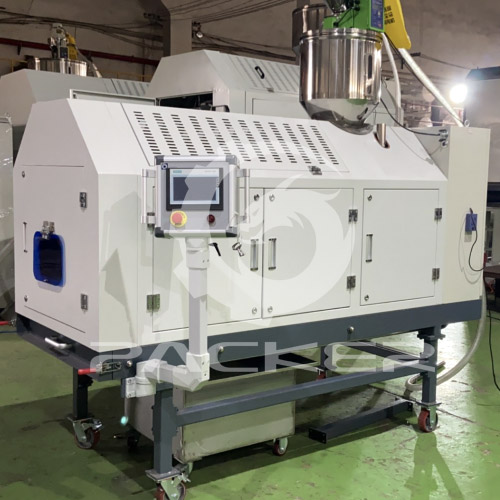Exploring the Distinctive Advantages of Plastic Master Batch Pellet Dryers Over Conventional Drying Methods
2024-03-16
In the realm of plastics manufacturing, precision and efficiency are key to achieving optimal product quality. Central to this process is the drying of plastic pellets, a crucial step to ensure the integrity and performance of the final product. While conventional drying methods have been relied upon for years, the advent of plastic master batch pellet dryers has introduced innovative approaches that offer distinct advantages. Let's delve into how these two methods differ and why plastic master batch pellet dryers are increasingly preferred in modern manufacturing processes.
Conventional Drying Methods:
Conventional drying methods typically involve using either hot air dryers or desiccant dryers. Hot air dryers use heated air to evaporate moisture from plastic pellets, while desiccant dryers utilize desiccant materials to absorb moisture. While these methods have been effective to some extent, they come with certain limitations:
1. Energy Consumption:
Conventional dryers often require high levels of energy to heat air or regenerate desiccant materials, resulting in increased operating costs and environmental impact.
2. Limited Efficiency:
Achieving consistent and uniform drying across all pellets can be challenging with conventional methods, leading to variations in moisture content and potential quality issues in the final product.
3. Processing Time:
Drying cycles with conventional methods may be lengthy, impacting overall production timelines and efficiency.
Plastic Master Batch Pellet Dryers:
Plastic master batch pellet dryers, on the other hand, offer several distinct advantages over conventional methods:
1. Precise Control:
These dryers employ advanced technology to precisely control drying parameters such as temperature, airflow, and residence time, ensuring uniform drying and consistent moisture levels in the pellets.
2. Energy Efficiency:
Many plastic master batch pellet dryers utilize energy-efficient heating systems and optimized airflow designs to reduce energy consumption, resulting in cost savings and lower environmental impact.
3. Faster Drying Times:
By optimizing drying conditions and airflow patterns, master batch pellet dryers can achieve faster drying times compared to conventional methods, improving overall production efficiency.
4. Reduced Material Waste:
The precise control and uniform drying offered by master batch pellet dryers help minimize material waste and rejects, leading to improved yield and cost-effectiveness.
5. Integration Capabilities:
Plastic master batch pellet dryers can often be seamlessly integrated into automated manufacturing processes, allowing for greater flexibility and efficiency in production lines.
Conclusion:
In conclusion, plastic master batch pellet dryers represent a significant advancement in the field of plastics manufacturing, offering superior performance, efficiency, and control compared to conventional drying methods. With their ability to deliver precise and uniform drying while minimizing energy consumption and material waste, these dryers are becoming increasingly indispensable in modern manufacturing operations. As the industry continues to evolve, the adoption of plastic master batch pellet dryers is poised to grow, driving innovation and enhancing the quality and sustainability of plastic products worldwide.



